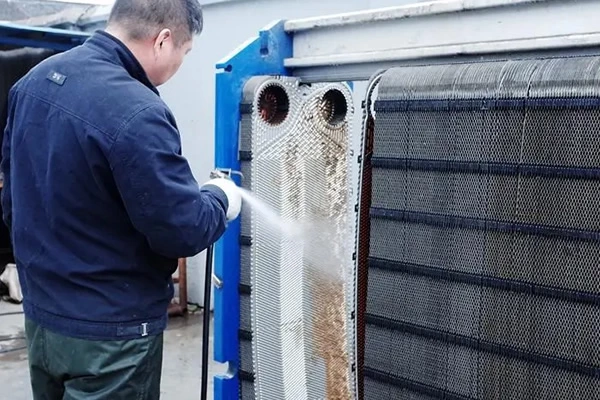Key Applications Of Plate Heat Exchangers In Dairy Processing

1. Primary Applications of Plate Heat Exchangers in Dairy Processing
1.1 Rapid Cooling of Fresh Milk
Multi-stage plate heat exchangers (e.g., 6-pass design) utilize tap water and chilled water as cooling media to rapidly reduce the temperature of freshly extracted milk to below 4°C. This process effectively inhibits bacterial growth and extends the shelf life of raw milk.
1.2 Sterilization Processes
- HTST Pasteurization (72-75°C for 15 seconds): Ensures pathogen elimination while preserving active nutritional components.
- UHT Sterilization (135-150°C for 2-5 seconds): Achieves extended shelf life through precise temperature control.
1.3 Cream Separation
- Preheating: Milk is heated to 50-60°C to reduce viscosity before separation.
- Post-separation Cooling: Skimmed milk is immediately cooled to 4°C for storage.
Typical configurations include combined preheating and cooling sections.
1.4 Fermented Dairy Production
- Preheating ingredients to 40-45°C to activate starter cultures.
- Cooling post-fermentation to halt the process.
- Final cooling to below 10°C for filling.
1.5 Frozen Dairy Processing
In ice cream slurry production:
- Pasteurization: 85°C for 30 seconds.
- Post-homogenization Cooling: Rapid cooling to 4°C.
- Aging Stage: Precise temperature control for optimal texture.
2. Core Performance Parameters
Dairy plate heat exchangers are typically constructed from 316L stainless steel, with titanium available for specific conditions. Plates are precision-stamped with thicknesses of 0.5-1.0 mm, ensuring excellent heat transfer and structural integrity. Design pressure reaches up to 25 bar, with higher-pressure models available upon request. Operating temperatures range from -20°C to 200°C. Sealing materials (EPDM, NBR, or Viton) are selected based on medium characteristics.
3. Key Advantages of Plate Heat Exchangers
- High Heat Transfer Efficiency: Turbulent flow design achieves heat transfer coefficients of 3000-7000 W/m²·°C.
- Compact Design: Occupies 1/5 the volume of traditional shell-and-tube heat exchangers for equivalent heat transfer capacity.
- Hygienic Compliance: Supports CIP/SIP cleaning, meeting 3A sanitary standards.
- Modular Scalability: Adjustable capacity via plate addition/removal, with heat transfer areas ranging from 1 to 100 m².
- Long-Term Durability: Industrial-grade gaskets withstand over 5000 assembly/disassembly cycles.
4. Selection Considerations
Equipment selection should account for processing capacity (e.g., 5000 L/h), medium properties (solids content, viscosity), and process requirements (heating/cooling rates). Collaboration with professional suppliers is recommended for tailored solutions.
Welcome To Visit Our Official Website!
If you have any questions, please contact us through the following ways, we will give you the most sincere service!




